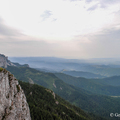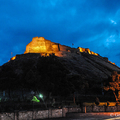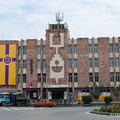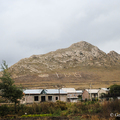Kutaisziből Tbiliszibe nagyjából 3 óra alatt jutottunk el. Az út nagy része szó szerint hegyen-völgyön keresztül vezet, szerpentinszerűen kanyargó meredek kaptatókkal. Mint ahogy lenni szokott, ezt az utunkat is a táj, és a grúz vezetési stílus tette igazán emlékezetessé, bár nem ez a szakasz volt a legijesztőbb a két hét alatt.
To get to Tbilisi we took a marshrutka from Kutaisi. The ride takes circa 3 hours literally over hill and dale, steep slopes and serpentine roads. The Georgian driving style makes every travel unforgettable as our driver was a bit crazy in this case too but not this trip was the scariest at all.
Tbiliszi története ugyan nem datálható olyan régre, mint Kutaiszié – „mindössze” 1550 éves településről van szó –, de mivel a térségen áthaladó Európát Ázsiával összekötő kereskedelem úgymond ütőerén fekszik, nem csoda, hogy már a kora középkorban jelentős várossá nőtte ki magát. Tbiliszi volt a középkori Ibéria és Kartli királyságok, majd az egyesített Grúz Királyság székhelye, vezető szerepét pedig az orosz hódítást követően, Transzkaukázia székhelyeként is képes volt megtartani, lokális kereskedelmi központként pedig jelentős török, örmény és azeri hatás is érte. A maga közel 1,5 millió lakosával ma is Grúzia legnagyobb városa és minden decentralizációra irányuló törekvés ellenére (emlékezzünk csak a Kutaiszibe helyezett országgyűlésre) központi szerepet tölt be az ország kormányzásában.
History of Tbilis could not date back as far as Kutaisi’s, as the capital is ‘only’ 1550 years old, but since it lies at the artery of east-west trade roads between Asia and Europe it quickly became a very important commercial hub. In the early medieval times Tbilisi was the capital of the kingdoms of Iberia and Kartli and later became the centre of the unified Georgian Kingdom. The city kept its leading position after the Russian occupation of Transcaucasia and as the seat of the province it was influenced by Turkish, Armenian and Azerbaijani culture. With almost 1.5 million inhabitants Tbilisi is the largest city in Georgia and despite all efforts of decentralization (remember moving the parliament to Kutaisi) it is still the economic and political centre of the country.

Tbiliszi óvárosa a Narikala erődből nézve. A történelem nem bánt kesztyűs kézzel a térség országaival, így Grúziával sem. Nagy birodalmak közé ékelődve Tbiliszi felett is gyakrabban lengett idegen zászló (perzsa, szeldzsuk, oszmán és persze orosz, csak hogy párat említsek), mint grúz, de minden hódító és idegen kultúra otthagyta a keze nyomát a város arculatán nagyon is egyedi karaktert alakítva ki ezzel. Manapság a grúz építészet hipermodern és esetenként a történelmi városképtől nagyon elütő építményekkel igyekszik „európaivá” tenni a várost.
The view of Tbilisi’s downtown from the Narikala Fortress. History did not treat Georgia with kid gloves, as it was the same with every country in the area. Wedged between empires wind waved foreign flags (Persian, Seljuk, Ottoman and of course Russian) over Tbilisi more often than Georgian, but all conqueror left its cultural fingerprint on the city creating a unique character. Nowadays Georgian architects build hypermodern buildings in the historical city centre creating bigger and bigger contrast between past and present times.
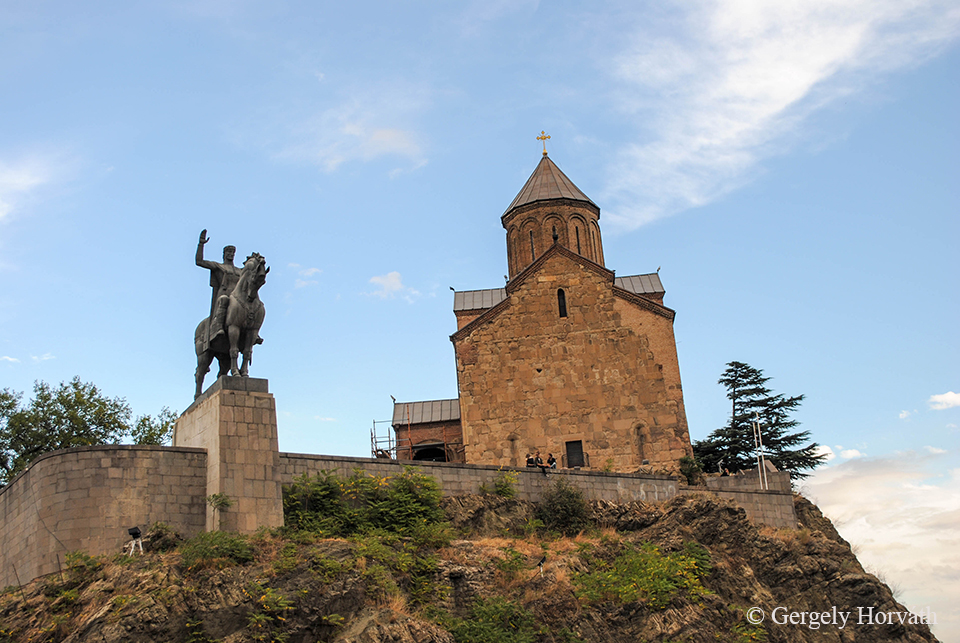
A város egyik ikonikus pontján, a Kura folyó (grúzul Mtkvari) felett magasodó Meteki sziklán álló templom és a várost megalapító Vaktang Gorgaszali (becenevén Farkasfejű Vaktang [egyébként már a "Vaktang" név is „farkastestűt” jelent az akkoriban tetőző farkaskultusz nyomán]) lovas szobra. Vakhtang Építő Dávidhoz hasonlóan a grúz történelem egyik legjelentősebb figurája.
Over the Kura river (Mtkvari in Georgian) on the top of the Metheki cliff stands a medieval church together with the equestrian statue of the city founder Vakhtang Gorgasali (or Vakhtang the Wolf Head [interestingly the name 'Vakhtang' means ‘wolf bodied’ so the king is very good example of the early medieval Georgian wolf cult]). Along with David the Builder Vakhtang Gorgasali is an iconic figure of Georgian history.
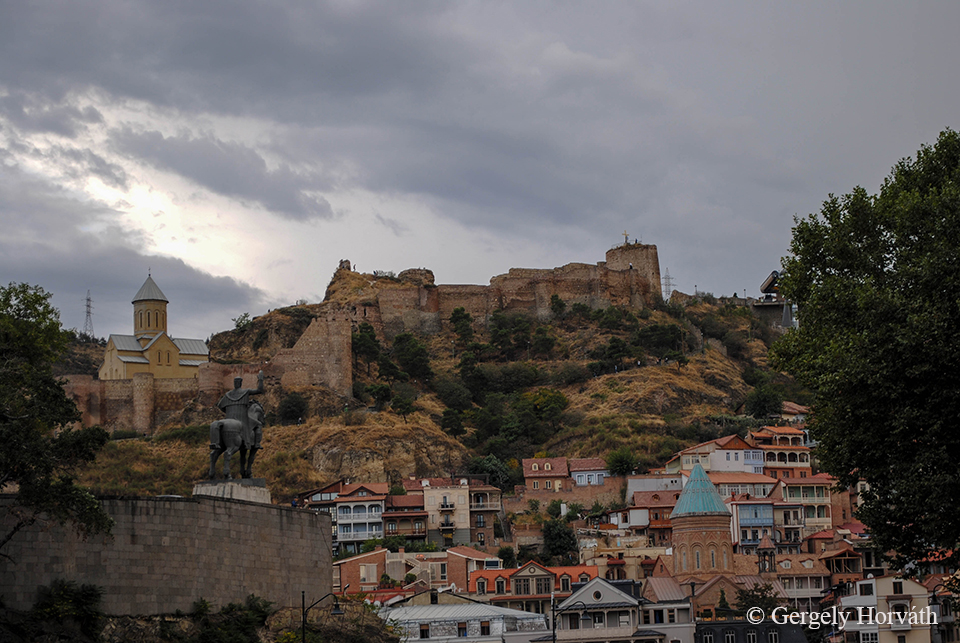
Átellenben a Narikala erőd magasodik a város fölé. A késő ókorban (4. sz.) épült erődrendszer látogatható, de elég romos állapotban van. Neve egyébként mongol eredetű, (ők is jártak erre), „kis erőd” jelentésű.
At the other side of the river, on a steep hill lies the Narikala Fortress. The fortress dated back to the late antiquity (4th century AD). It’s open for tourists, but it’s partly ruined. The name ‘Narikala’ comes from Mongolian (they also ruled Tbilisi for a short time) meaning ‘little fortress’.

Az egy főre eső templomok száma Grúziában elég magas, így a Narikala falai között is találunk egyet. A Szt. Miklós templom eredeti, 13. sz.-ban épült épülete egy tűzvész során semmisült meg, 1996-97-ben építették újjá.
The number of per capita churches is quite big in Georgia, so it’s no wonder that inside the fortress’ walls the St. Nicholas church can be found. The original building dates back to the 13th century and later destroyed in a fire. It was rebuilt between 1996-1997.
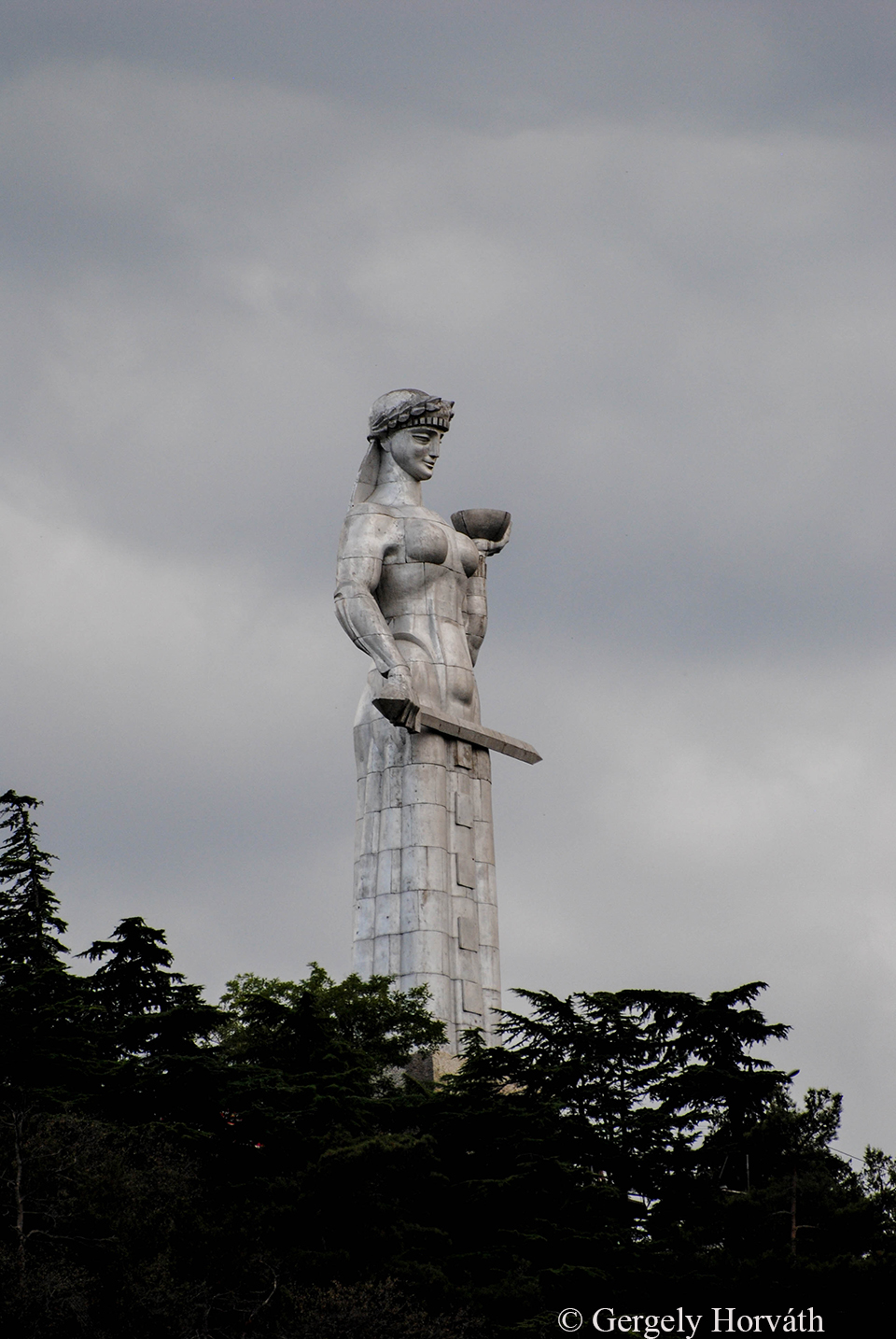
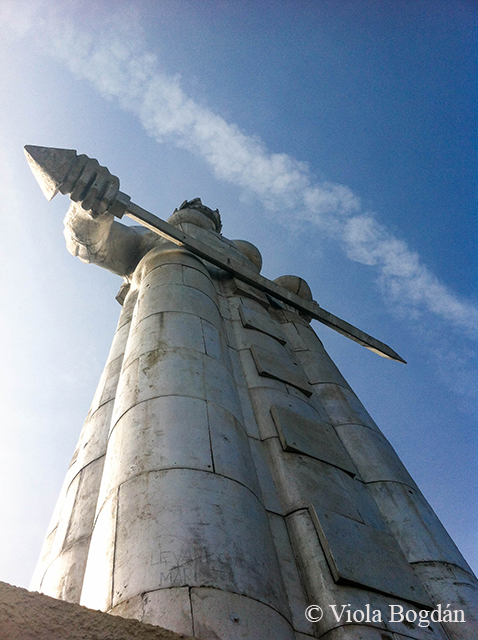
Az erődtől nem messze, a Szololaki dombon trónol egy újkori szobor is, a Kartvlisz Deda (Grúzia Anyácska). 1958-ban avatták fel, a város megalapításának 1500. évfordulója alkalmából. A női alak a grúz néplelket hivatott megjeleníteni: Bal kezében bort kínál a baráti szándékkal közeledőknek, míg jobbjában karddal várja ellenségeit.
Not very far from the fortress a modern statue was erected on the Sololaki Hill. Kartvlis Deda (Mother Georgia) was built in 1958 commemorating the 1500th anniversary of the city. The statue represents the true Georgian character: The female figure offers a bowl of wine with her left hand for friends, while holding a sword in her right hand against enemies.
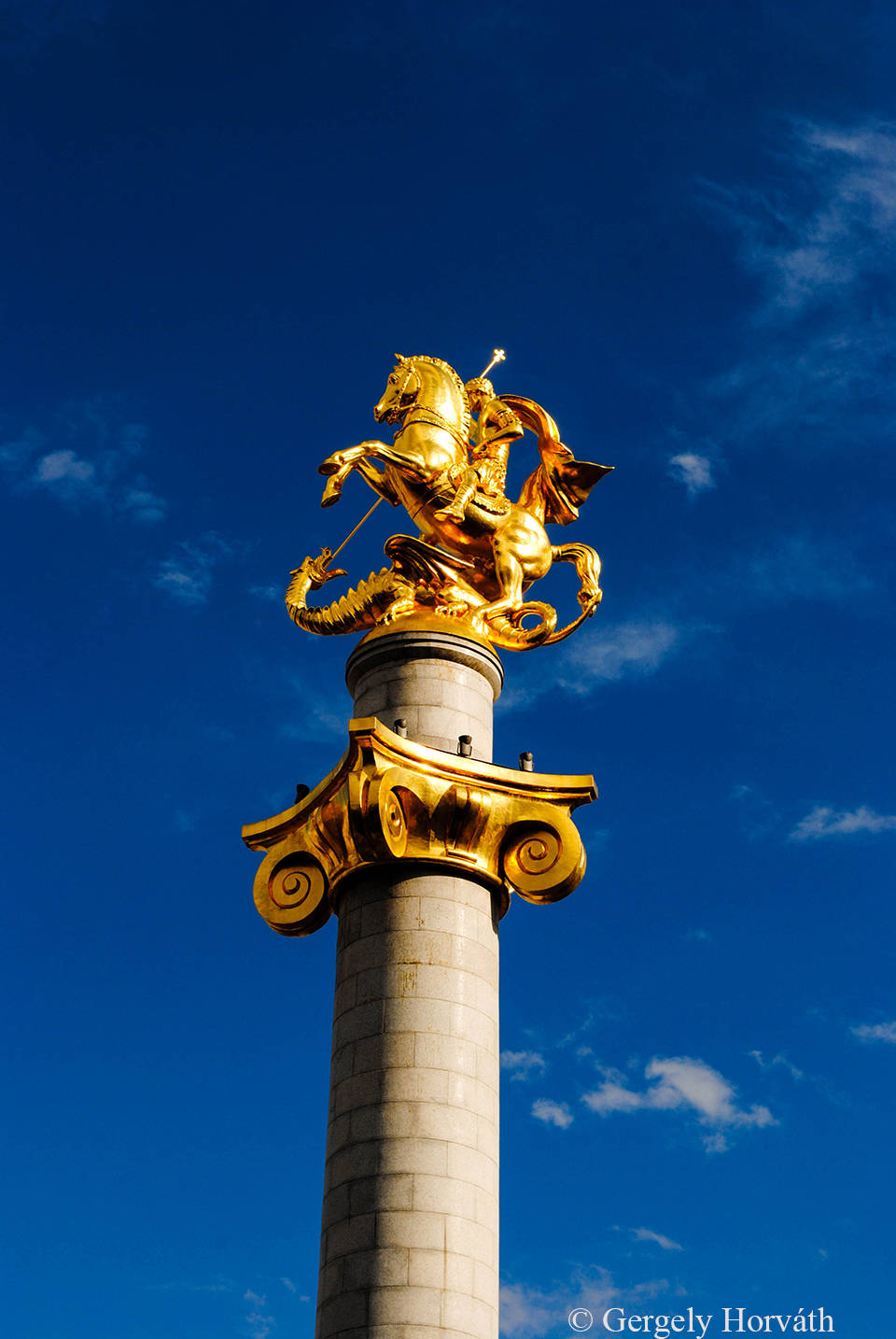
Szintén újkori, de a város központjában, a Szabadság téren emelkedik Grúzia védőszentjének, Szent Györgynek szobra. Az ország angol neve is tőle származik.
Statue of St. George (patron saint of the Georgia and he is whom the country’s English name comes from) erected a few years ago in the modern centre of the city at the Freedom Square.
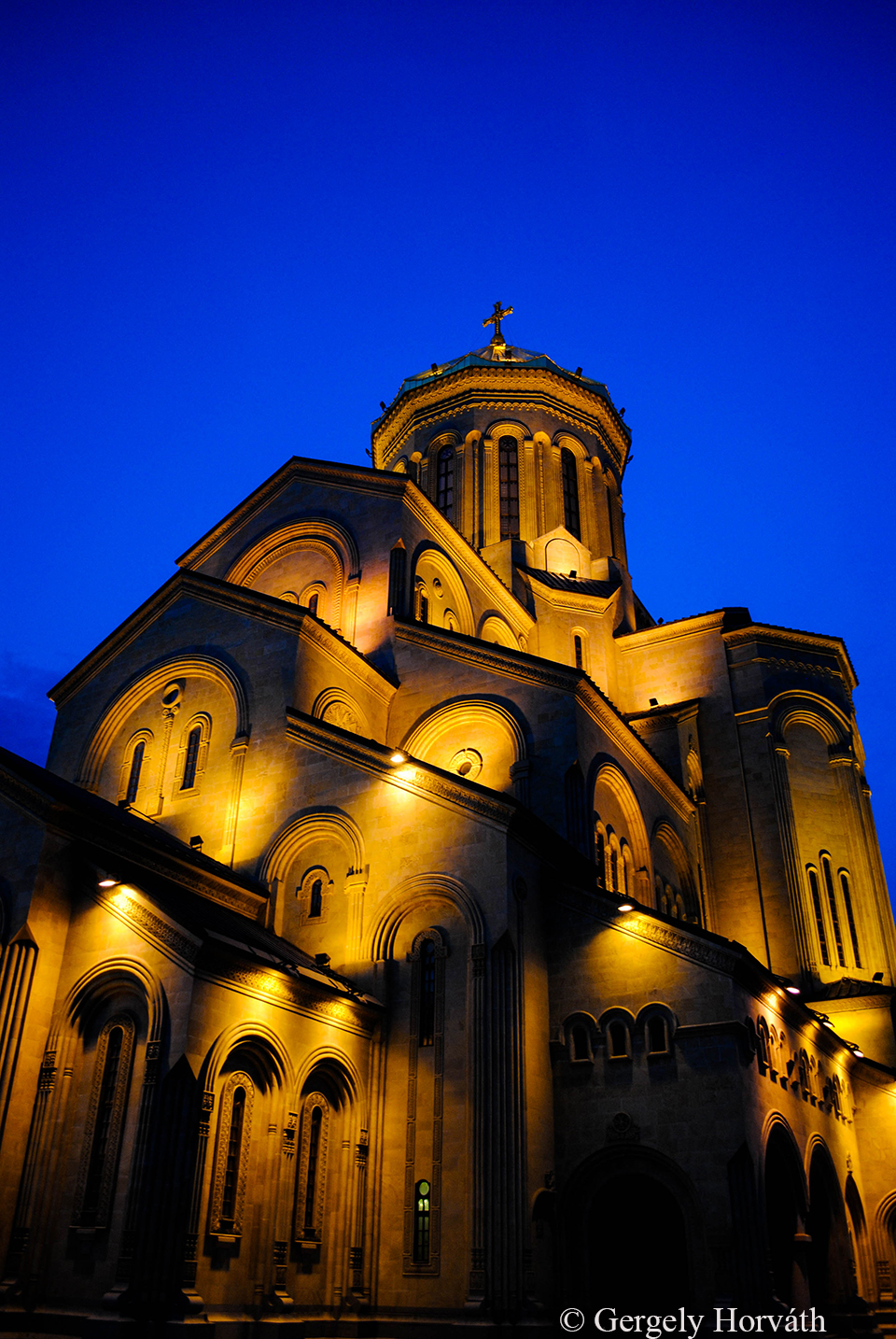
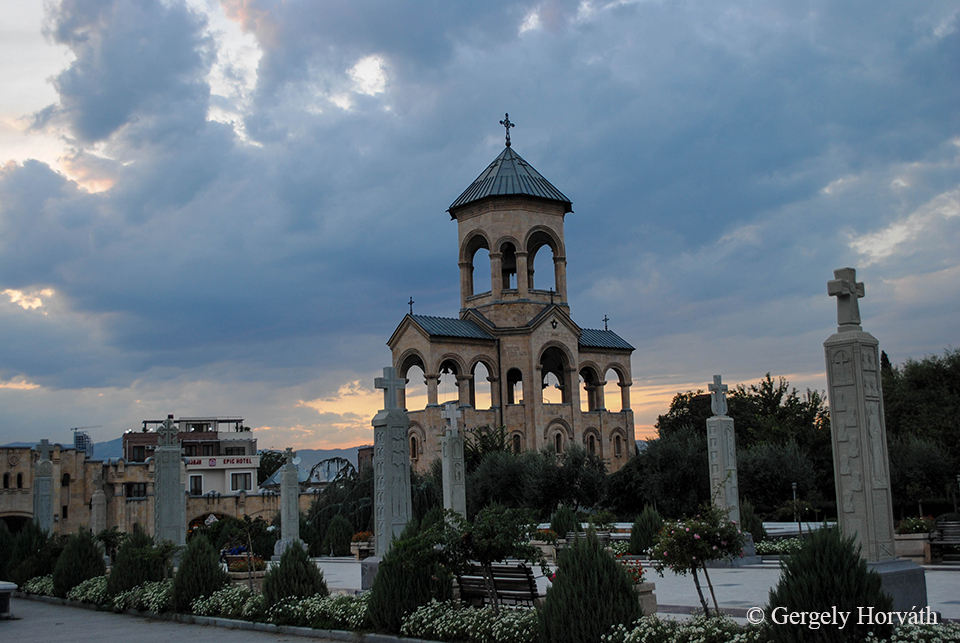
A Szameba katedrálisról a bevezető posztban már volt szó. A katedrális a legnagyobb templomnak számít a Kaukázus térségében (a jereváni Világosító Szt. Gergely katedrálissal egyetemben), valamint a világ 3. legmagasabb ortodox temploma. Építéséhez egy elég termetes botrány kötődik: Mikor 1995-ben megkezdték a katedrális és a hozzá tartozó (amúgy elég impozáns, itt a második képen) park építését, elég hamar belebotlottak Tbiliszi korábban ott elterülő legrégebbi ismert örmény temetőjébe. A Bagrati katedrálisnál már láthattuk, hogy a nemzetközi nyomás nem mindig hatja meg a grúz döntéshozókat, akkoriban meg tényleg más szelek fújtak errefelé, így a sírokat is minden lelkiismereti megingás nélkül, Örményország heves tiltakozása közepette eldózeroltatták.
I already mentioned Sameba Cathedral in my first post. This church is the biggest in the Caucasus area (along with the Cathedral of St. Gregory the Illuminator in Yerevan) and the 3rd tallest orthodox church in the world. Also, there is a quite huge scandal attached to its building. Back in 1995 when they started to construct the cathedrals’s park (which looks quite fascinating by the way, second pic) workers found Tbilisi’s oldest known Armenian cemetery. You may remember from the story of Bagrati Cathedral that Georgian authorities not always pay attention to international pressure, not to mention that political system was a bit different back then, so they simply destroyed the graves despite of huge protest in Armenia.
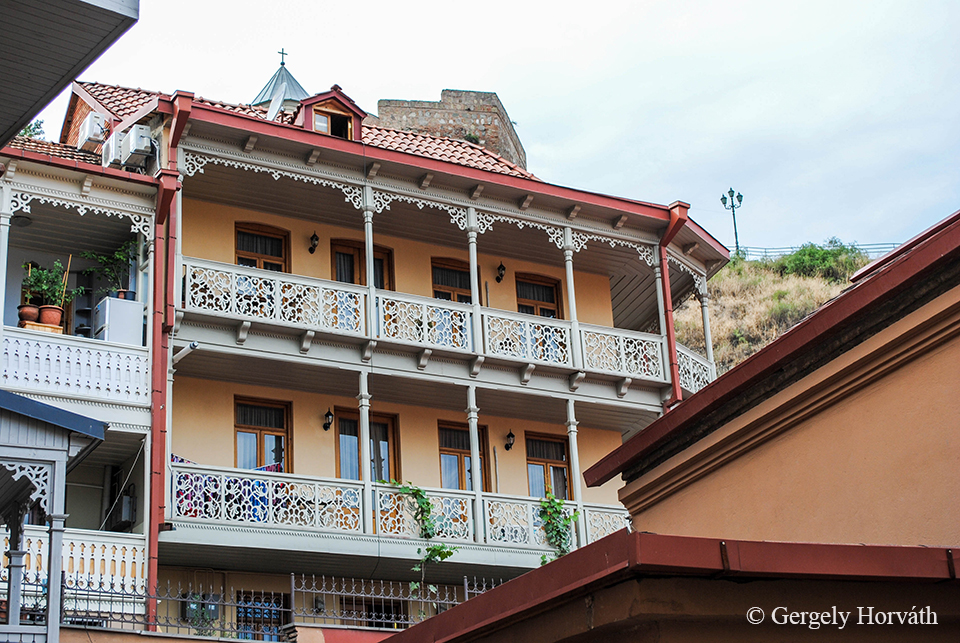
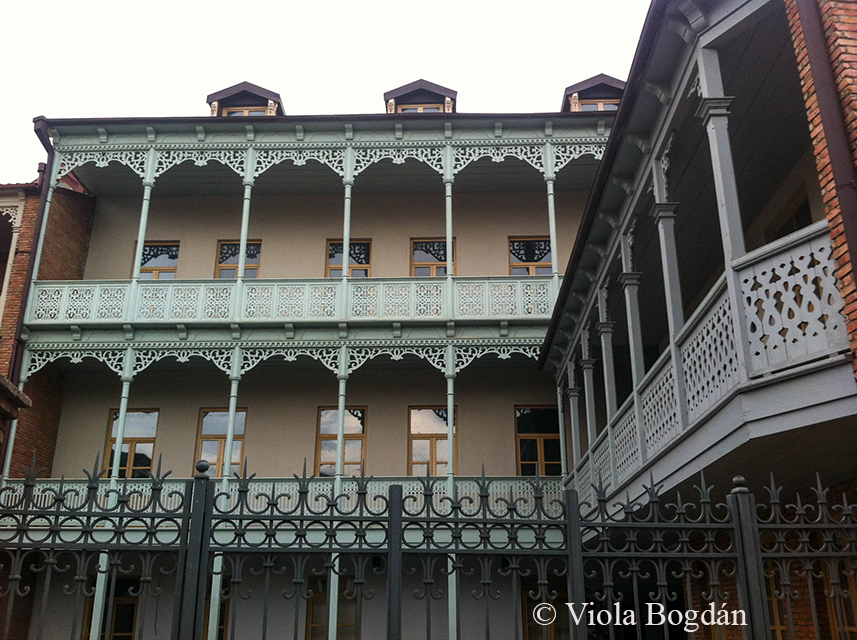
Az óváros lakóházai főleg török stílusban épültek.
The houses of the old town are built in somewhat Turkish style
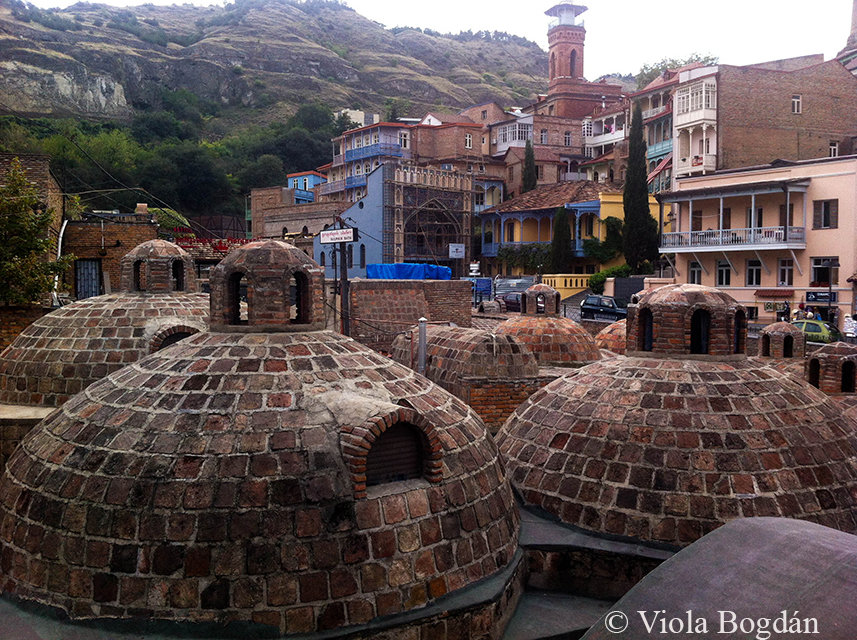
A török hódítás emlékei a kénfürdők is. Tbilisziben egyébként jelentős muzulmán vallású kisebbség is él, főleg a kénfürdők közvetlen közelében található török negyedben, melynek központjában a háttérben látható tornyos mecset áll.
Sulphur baths are another memento of Turkish occupation. Significant Muslim minority still lives in Tbilisi, mainly in the Turkish district where you can found the city’s Jami (tower in the back).
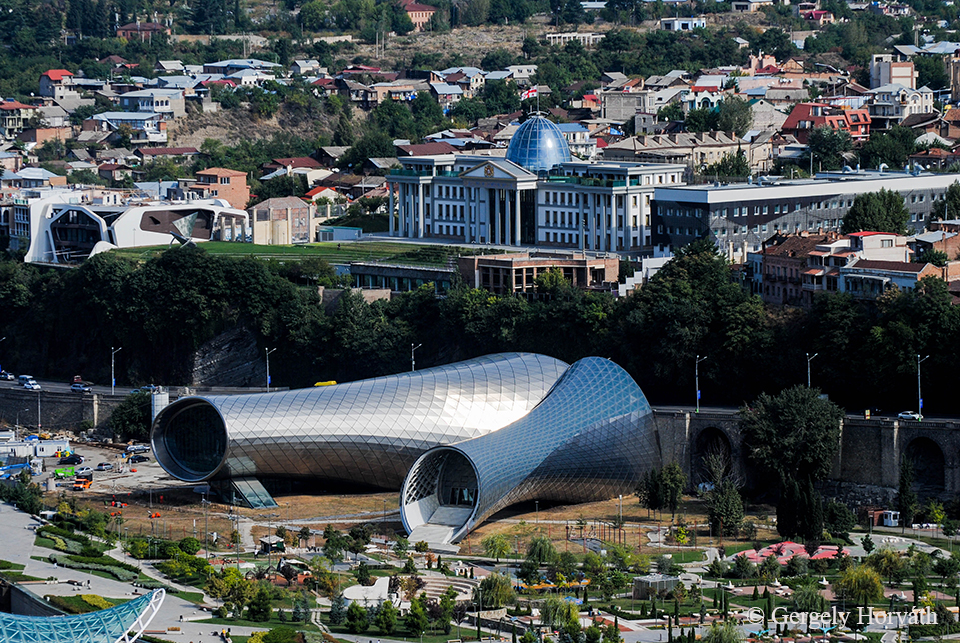
A már említett posztmodern épületek egyike a Rike parkban nemrég felépített Színház és Kiállítócsarnok. A fémcsöveket formázó épület felett az Elnöki Palota látható. A park már elrendezésében is számos, szokatlan tájépítészeti megoldás használtak, mivel Grúzia stilizált térképét jeleníti meg. Az egyes tartományokat mintázó gyepfoltokat gyalogutak választják el egymástól.
One of the already mentioned postmodern buildings is the newly built Theatre and Exhibition Hall in Rike Park. Above these metal tubes you can see the President’s Residence. Rike Park also counts as a postmodern construction since its shape represents the map of Georgia. Plantations form the countries provinces and roads connect them with each other.
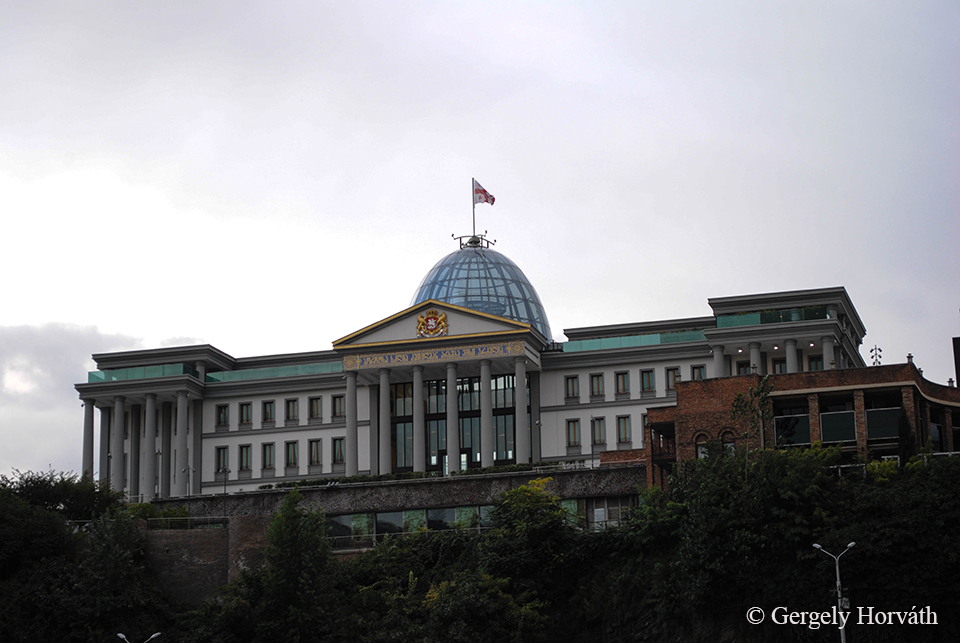
Elnöki palota
Presidential palace
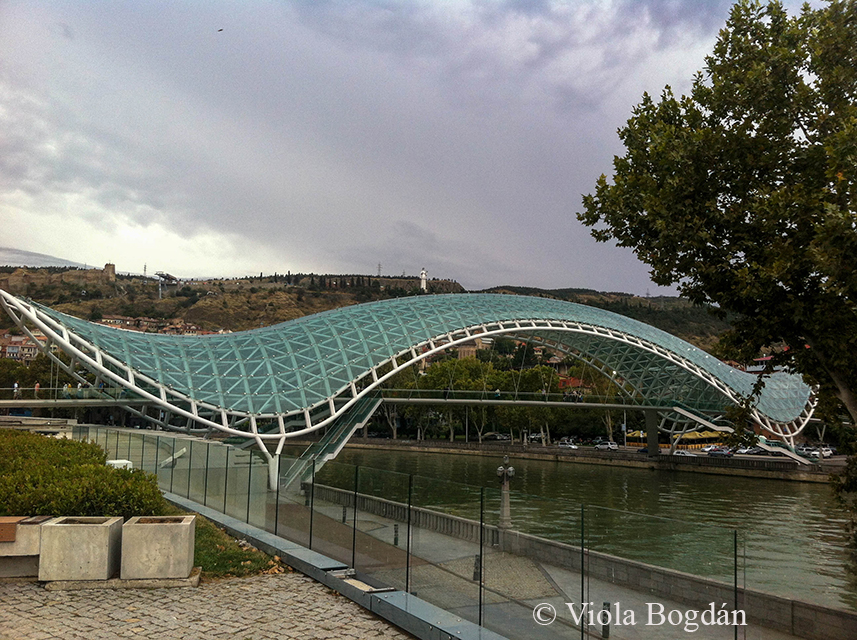
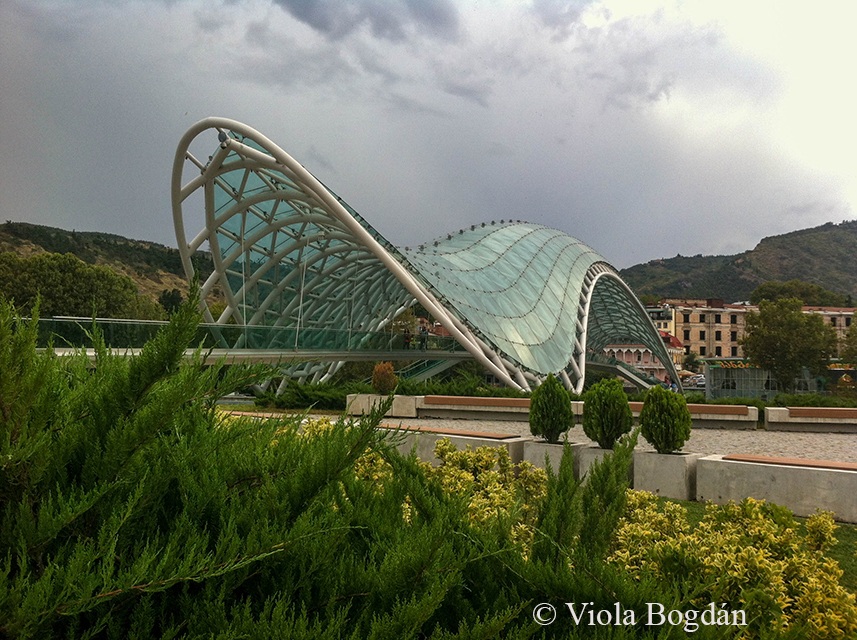
Végül, de főleg nem utolsó sorban, a modern építmények talán legemblematikusabbja a Kura folyó felett átívelő Béke hídja. A 2010-ben átadott gyalogoshíd Michele De Lucci tervei alapján készült (ő tervezte az elnöki palotát is 1991-ben). Az eredetei elgondolás szerint tengeri állatot formáz, de a népnyelv hamar elnevezte ’Always Ultra’-nak. Talán mondani sem kell, miért.
Last but definitely not least the most emblematic postmodern building: the Bridge of Peace. This pedestrian bridge was opened in 2010 and connects the left and right banks of the Kura River. It was built by the Italian architect Michele De Lucci (he designed the President’s Residence in 1991) and planned to represent a marine animal. However, locals nicknamed it ‘Always Ultra’. Do not need to mention why.
Tbilisziben összesen két és fél napot volt szerencsénk eltölteni, igaz két részletben. Ennek oka, hogy egy napot Kazbegi hegyi városkában töltöttünk, ahová a legegyszerűbben Tbilisziből indulva lehet eljutni. Kazbegiben szerzett élményeinkről a következő posztban számolok be.
We spent altogether two and a half days in Tbilis but not continuously. The reason of this that we spent one day in the mountain resort town Kazbegi and the easiest way to get there is trough Tbilisi. I will present our experience and impressions about Kazbegi in the next post.

